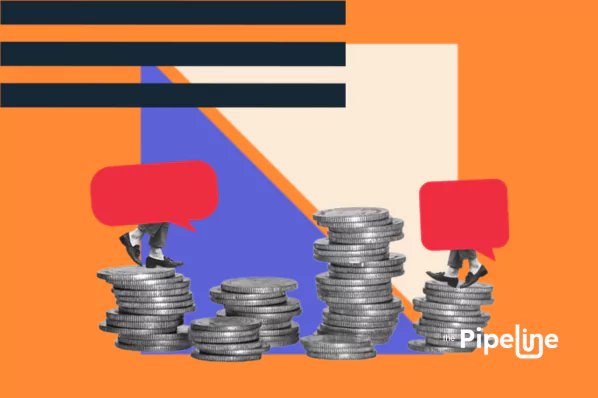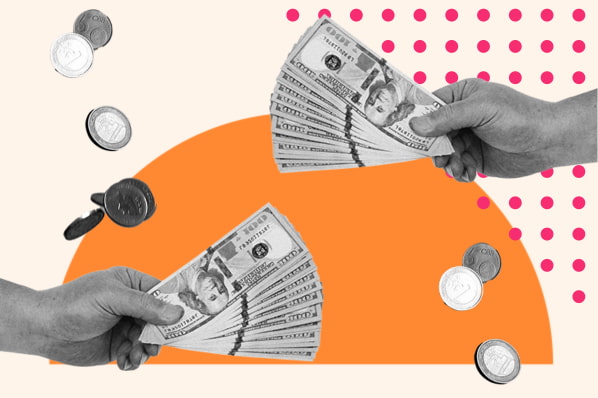Most goods and services are susceptible to the law of supply and demand. When demand increases, so do prices. And when demand falls, prices decline as well.
Price stickiness — also known as nominal rigidity — doesn't comply with the principles of supply and demand, nor does it fluctuate as production or selling costs increase — at least, not as rapidly as other commodities.
To put it more bluntly, sticky prices follow the same premise of a company saying, "We're going to keep the price of our product static at $15 per unit, regardless of inflation, changes in consumer demand, or any other potential macroeconomic shocks."
There's no lone reason for firms to keep their prices sticky — the phenomenon has multiple root causes. Here's some insight as to why a company might embrace rigid pricing.
Reasons for Price Stickiness
1. The costs of adjusting prices might not be worth it.
In some instances, the logistics, hassle, and costs of shifting prices to meet demand are not worth it to a business — particularly if the prices have been advertised or thoroughly promoted.
If a company is in that boat, then changing prices means incurring something known as "menu costs" — a term that stems from the additional costs restaurants take on when they have to print new menus to reflect new prices.
Promotion and advertising are rarely cheap. If a business is unable to offset the new overhead from revamping those kinds of materials, it will probably keep its prices sticky.
2. Long-term contracts keep prices locked in.
In some cases — most commonly in the B2B sector — businesses will be locked into long-term contracts to sell their goods and services at an agreed-upon price.
For instance, a flour vendor might make a hard, three-year deal to supply an industrial bakery at a specific price each year. Even if demand for wheat suddenly skyrockets, the vendor would still have to honor the price in the contract.
3. A price increase could anger consumers.
It's no secret that consumers generally err on the side of, "I don't want to pay more for a product than I think it's worth." And when consumers get accustomed to paying a certain price for a given product or service over long periods, that mentality takes hold.
When this happens, it can be hard to shake them loose — and raising prices could drive them away entirely. So even if demand has shifted in a company's favor, a hike in prices might be enough to tick off its consumer base.
Examples of Sticky Prices
Wages
Wages are considered sticky because employees take home the same amount each month, regardless of internal or external factors. For example, if your company hires someone new on your team — thus relieving some of your workload — your salary stays the same. Wages are also unlikely to decline even in severe economic conditions, such as a recession.
Restaurants
As I mentioned above, the phenomenon known as "menu costs" gets its name from the trouble (and costs) of changing restaurant menus. If a fast-food chain wanted to change its prices, it would have to alter its promotional and informational materials to reflect that shift. So, in many cases, those kinds of businesses will keep their prices rigid and ride out changing consumer interests.
SaaS Products
The "menu" pricing dilemma often also applies to SaaS companies. Pricing a SaaS product is a tricky, delicate practice. Doing it right often means bringing in pricing consultants and updating software, and even then, it can still be a crapshoot.
That risk — coupled with what is often a significant drain on time, effort, energy, and resources — isn't worth the trouble to a lot of businesses in that industry. In turn, they keep their prices sticky.
Coca Cola
The early days of Coca Cola provide an interesting example of price stickiness. From its invention in 1886 to the late 1950s, the price of a bottle of Coke held true a nickel — even as most other product's prices adjusted through some 70 years of shifting economic circumstances.
The main reason? Vending machines.
Most vending machines that sold Coca Cola only took nickels, and if the company wanted to overhaul those machines to take dimes, they'd have to double the price of their product.
Fearing customer frustration and the loss of business that would come with it, Coke opted to keep charging five cents for their product for the better part of a century.
Flexibly priced products and services are more prone and responsive to any changes in industry trends or shifts in the economy at large. Those goods include commodities that constantly adjust their prices like gasoline, and the broader idea of flexible pricing encompasses some more specific pricing strategies.
For instance, the practice of segmented pricing — like when movie theaters offer discounted prices for seniors and students — falls under the umbrella of flexible pricing. The same goes for a construction contractor being willing to negotiate their prices with clients based on the scale of a job.
The concept of sticky prices is a core tenet of macroeconomics. It's a prevalent phenomenon with some significant bearing on the economy at large. So if you want a better picture of how and why certain prices seem to stay put no matter what, it's an idea worth having some concept of.
Pricing Strategy
.png?width=112&height=112&name=Image%20Hackathon%20%E2%80%93%20Vertical%20(45).png)
.jpg)







![Price Skimming: All You Need To Know [+ Pricing Calculator]](https://53.fs1.hubspotusercontent-na1.net/hubfs/53/price-skimming-strategy.jpg)

.jpg)
![B2B Pricing Models & Strategies [+ Pros and Cons of Each]](https://53.fs1.hubspotusercontent-na1.net/hubfs/53/b2b-pricing-models-and-strategies.jpg)